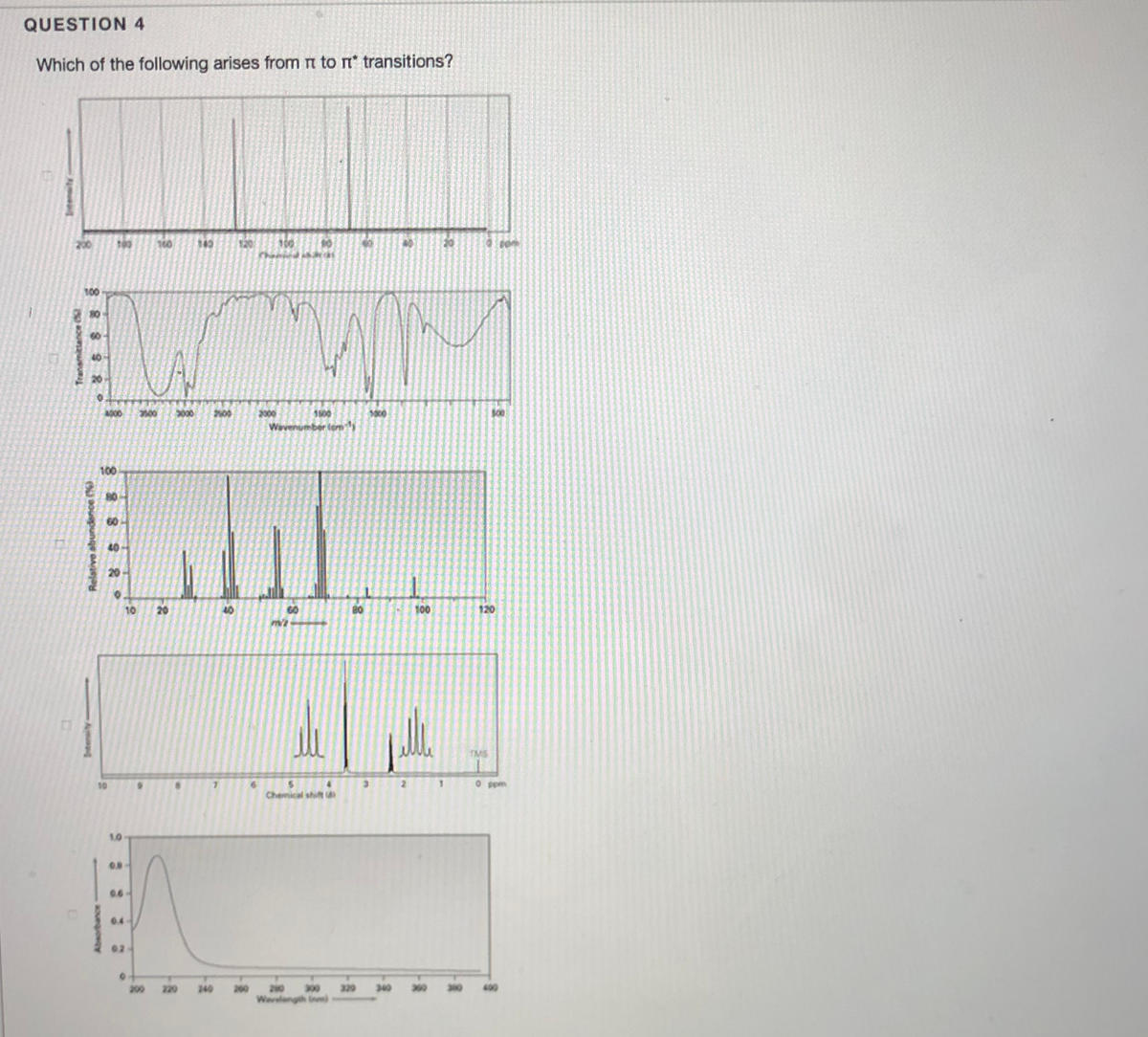QUESTION 4 Which of the following arises from n to n transitions? 100 160 143 120 100 1600 Wavenumber lem) 1500 1000 100 80 GO 40 20 10 20 100 120 TMS 10 Chemical shift 1.0 0.6- 0.4 02 220 340 380 400 200 300 Wavelengh in 200 240 260 329 tensity aouegowy
QUESTION 4 Which of the following arises from n to n transitions? 100 160 143 120 100 1600 Wavenumber lem) 1500 1000 100 80 GO 40 20 10 20 100 120 TMS 10 Chemical shift 1.0 0.6- 0.4 02 220 340 380 400 200 300 Wavelengh in 200 240 260 329 tensity aouegowy
Principles of Instrumental Analysis
7th Edition
ISBN:9781305577213
Author:Douglas A. Skoog, F. James Holler, Stanley R. Crouch
Publisher:Douglas A. Skoog, F. James Holler, Stanley R. Crouch
Chapter19: Nuclear Magnetic Resonance Spectroscopy
Section: Chapter Questions
Problem 19.12QAP
Related questions
Question
4. Which of the following arises from π to π* transitions? Select all that apply.

Transcribed Image Text:QUESTION 4
Which of the following arises from n to n transitions?
100
160
143
120
100
1600
Wavenumber lem)
1500
1000
100
80
GO
40
20
10
20
100
120
TMS
10
Chemical shift
1.0
0.6-
0.4
02
220
340
380
400
200
300
Wavelengh in
200
240
260
329
tensity
aouegowy
Expert Solution
This question has been solved!
Explore an expertly crafted, step-by-step solution for a thorough understanding of key concepts.
This is a popular solution!
Trending now
This is a popular solution!
Step by step
Solved in 2 steps with 1 images

Knowledge Booster
Learn more about
Need a deep-dive on the concept behind this application? Look no further. Learn more about this topic, chemistry and related others by exploring similar questions and additional content below.Recommended textbooks for you

Principles of Instrumental Analysis
Chemistry
ISBN:
9781305577213
Author:
Douglas A. Skoog, F. James Holler, Stanley R. Crouch
Publisher:
Cengage Learning

Physical Chemistry
Chemistry
ISBN:
9781133958437
Author:
Ball, David W. (david Warren), BAER, Tomas
Publisher:
Wadsworth Cengage Learning,

Principles of Instrumental Analysis
Chemistry
ISBN:
9781305577213
Author:
Douglas A. Skoog, F. James Holler, Stanley R. Crouch
Publisher:
Cengage Learning

Physical Chemistry
Chemistry
ISBN:
9781133958437
Author:
Ball, David W. (david Warren), BAER, Tomas
Publisher:
Wadsworth Cengage Learning,